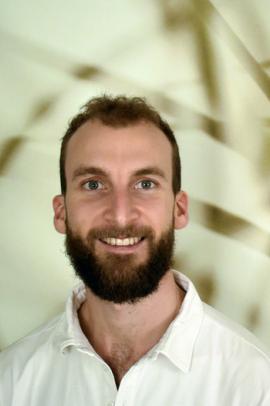The Trauma Dharma
The First Do No Harm training program aims to make meditation safer, in part by recognizing its pitfalls.
APR 10, 2018
Meditation can lead people to some dark places, triggering trauma or leaving people feeling disoriented, according to Dr. Willoughby Britton, who has studied the adverse effects of contemplative practices for more than a decade. In May 2017, she and her research partner and husband, Dr. Jared Lindahl, released a study that identified 59 different kinds of negative meditation experiences. Their research has also shown that these distressing experiences are not limited to people who have a history of mental illness.
Now, she has teamed up with trauma specialist Dr. David Treleaven to help people work with these challenges. Their new three-day First Do No Harm training program is aimed at meditation teachers and providers of mindfulness-based interventions—therapeutic techniques rooted in mindfulness practices—but the lessons are helpful for anyone who meditates. The first program took place April 6–8 in in Shrewsbury, Massachusetts, and Britton, Lindahl, and Treleaven will be running similar programs in the future.
Below, Britton discusses her research and what she hopes to achieve with First Do No Harm.
Could you go over some of the studies that led up to the First Do No Harm program?
There are a few different studies that fed into this training. The very first one was my 2004 study that tracked the effects of meditation training on sleep, with the idea that sleep would improve and that that would be a mechanism by which meditation improved depression. It was the first study that ever measured sleep objectively, where we actually had people come into a lab so we could measure their brain waves, rather than having them just fill out questionnaires. What was really surprising was that the sleep of people who did the meditation course—this was mindfulness-based cognitive therapy—actually got worse. So, their slow-wave sleep decreased, their light sleep increased, and their number of awakenings increased. All of these signs of cortical arousal were directly related to the amount of practice they did.
It was a pretty clear result, and it really surprised me, because I had assumed that meditation was relaxing. And then I started to ask different meditation teachers about how I could have found this data. Is it wrong? Is it an anomaly? And a lot of meditation teachers said, “Yeah, of course. Meditation definitely makes you sleep worse. Everyone knows that. You go on a retreat and you stop sleeping.” And so I was really confused: There was this narrative out there that meditation was a panacea-like treatment for everything—it helps you sleep, it helps anxiety, it helps depression. But then some of the things I was hearing from teachers was really different.
You also started the Varieties of Contemplative Experience project, which documented the range of experience associated with meditation by interviewing practitioners and experts. What did that show?
In May, we published a paper that identified 59 different kinds of meditation experiences that could be difficult or distressing or impairing. The variability and diversity of experience also included diversity of response. So, the same experience may have been positive for one person and negative for another person, and the same experience in the same person might have been positive in one context and negative in another. We also identified 26 influencing factors, which are factors that predict whether a given experience is likely to happen, how long that experience is going to last, and whether it tends to be distressing or impairing.
What will you be teaching to the clinicians attending the “First Do No Harm” program?
The training has seven modules. The first day is typically an overview of the research around meditation-related difficulties. These types of experiences are not recorded very often in science because there tends to be a focus on the health benefits. But there’s a lot more going on: changes in perceptiveness and sense of self, and all kinds of things.
The second module discusses informed consent, which means providing patients with enough information to make informed decisions about engaging in mindfulness-based interventions. We go over examples of consent forms and also discuss how to advertise truthfully, making accurate statements about benefits versus limitations and risks. The third module is screening. How do you screen people who are coming into your program? What kinds of questions should you ask? Most people don’t know how to screen and don’t have the instruments.
So, you’re training MBI providers or teachers to look at whether a potential patient or student is at a high risk for a negative experience and how to identify those people?
Yes. If you don’t have mental health training, for example, and a person has a mental health problem, it might be better for them to do a mindfulness program that’s taught by someone who does have mental health training. It’s not a cut and dried, “These people should not meditate.”
Then there’s the monitoring module, which is how you know if somebody has a negative reaction to meditation. People tend not to report negative treatment experiences, because they have a strong desire to please the teacher or appear to be a good meditator. In addition, most people don’t have any sense that meditation might lead to something negative, so they think that they are the only one who is having the experience.
Teachers or MBI providers have to ask specific questions. Even asking people, “Hey, did anyone have any negative experiences?” is not enough. You need to be specific and ask, “Did you ever feel that your sense of self had disappeared? Did you ever feel like you were outside of your body?”
In the next module, we look at the psychology and neurobiological mechanisms of meditation. Most of my research is about how meditation strengthens the prefrontal cortex and how the prefrontal cortex can control or down-regulate the limbic system and the amygdala, which is a really great thing if you have too much emotion and you feel like you need to regulate it. But that same process can blunt all emotions, including positive ones. If people know how meditation works, then it helps them understand the symptoms.
The whole last day is the management module, and that is an introduction to trauma-informed approaches. David Treleaven just wrote a book called Trauma-Sensitive Mindfulness, which contains a lot of very practical, concrete things that minimize the risk.
The trauma-sensitive approach has been the direction that all mindfulness is heading in. At Jack Kornfield’s Spirit Rock Meditation Center, they require all of their instructors to do trauma training in order to be dharma teachers.
What is a technique that has been helpful?
When I did my MBSR [mindfulness-based stress reduction] and MBCT [mindfulness-based cognitive therapy] trainings, there was a lot of emphasis on mindfulness being about turning toward the difficult, and anything else was a kind of avoidance. There was this very black-and-white notion that you have to go toward what’s unpleasant. And often that can be re-traumatizing.
In the trauma-sensitive approach, you spend time in safe places that you associate with a part of the body. Then you keep 80 to 90 percent of your attention on your safe spot as you move to a negative emotion or trauma, such as a knot of anxiety you feel in your solar plexus. This is called dual awareness: keeping most of your awareness on something that’s safe and pleasant, but dipping into that unpleasant thing with 10 or 20 percent of your attention.
Titration is another technique, where you can actually move your attention back and forth between resources. So, you’re never just diving in with all of your attention. We have this idea that diving in is going to make us feel better. But often it can destabilize the system. It’s just too much, and it can be dissociating.
Are these techniques primarily for undoing the harm that another practice has caused or is this something that you would also bring to someone who is new to meditation?
The trauma-sensitive approach is understanding how nervous systems work with arousal and knowing that it’s very easy to overload your circuits. This is basically good for everyone and should be a foundational competency for anybody doing meditation and especially for anybody teaching it.
You wrote in one of the summaries of your studies that you were surprised to find that a history of mental illness didn’t necessarily correlate with the people who ended up running into a problem with their meditation.
We did not find support for the statement that this only happens to people with a psychological or trauma history. We also didn’t find support for it only happening to people who are doing intensive practice on retreats or who are poorly supervised. The people in our study were meditation teachers, and they were trained in some of the best monasteries in the world. So, it can happen under optimal conditions. Do I think it happens more under non-optimal conditions? Yes. But there’s a lot of people who say, “Oh, this is avoidable. And if you just have the optimal conditions, this won’t happen.” And we did not find support for that. So, let’s do something about it. Let’s be prepared. Let’s learn more.
What would you recommend that an instructor who can’t make it to one of your programs do to educate themselves along these lines?
The First Do No Harm training is going to be videotaped, and the Center for Mindfulness is intending on making it a webinar. We are also planning on having these trainings all over the world, so hopefully people have the opportunity to attend them.
But right now there is a free online meditation safety tool box that has all of the documents and inclusion and exclusion criteria to help with screening, consent forms, best practices for truth in advertising, and trauma resources. David’s book is another resource. Those would be two places to start.
- Log in to post comments






















